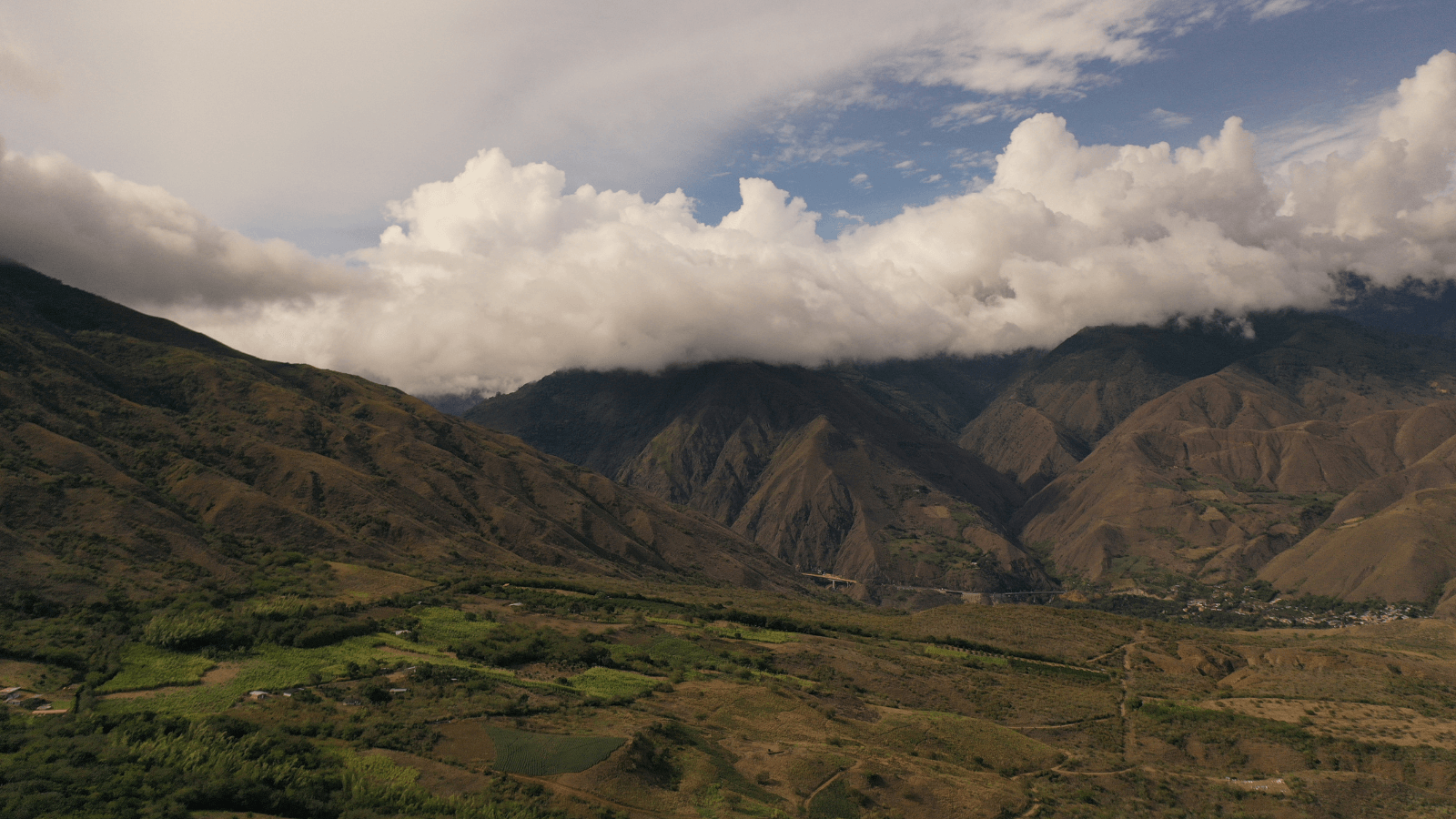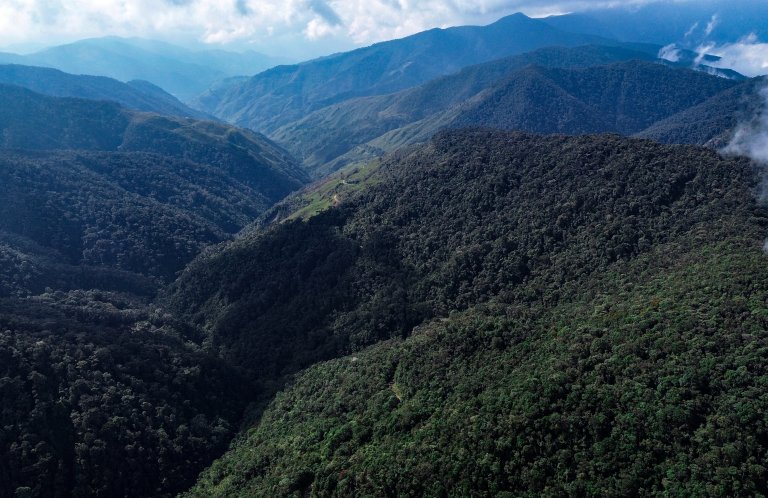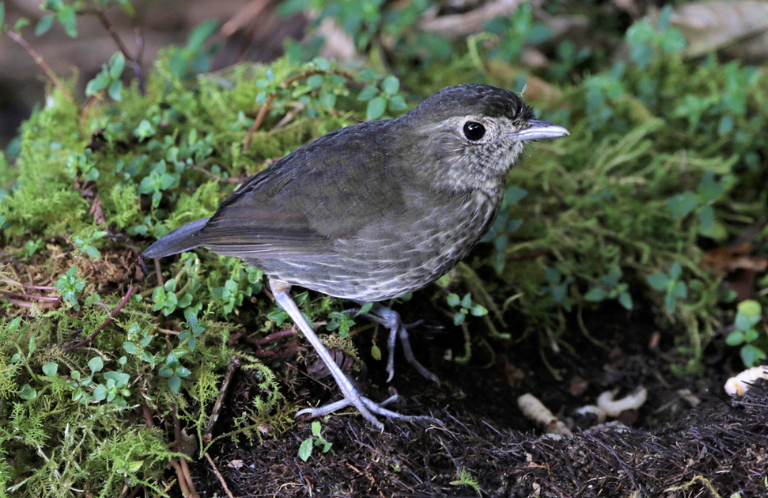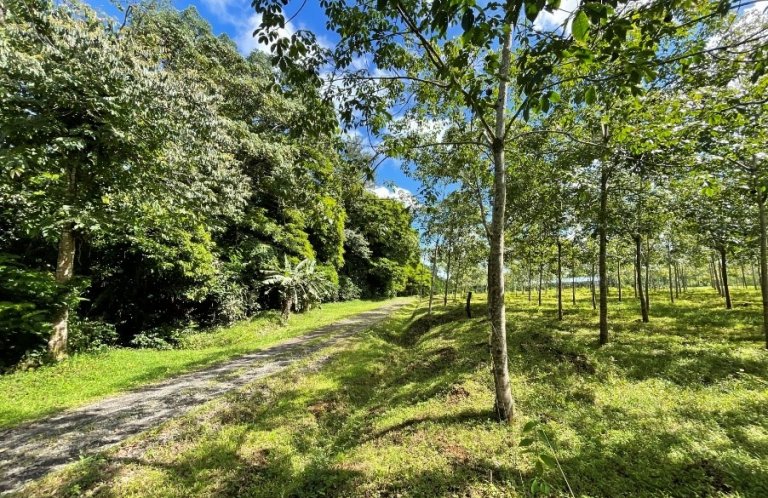Colombian Reserve Grows with the Designation of New Protected Land

An additional 3,262 acres (1,320 hectares) of tropical forest habitat are now under protection following a recent designation by the Valle del Cauca, Colombia environmental authority, Corporación Autónoma Regional del Valle del Cauca (CVC). This brings the total area protected in the Distrito Regional de Manejo Integrado (DRMI) Enclave Subxerofítico de Atuncela to 5,767 acres, or about the size of Hot Springs National Park in Arkansas.
Conserva Aves is a regional Initiative to create and expand subnational protected areas in Latin America. It is led by American Bird Conservancy (ABC), Audubon, BirdLife International, Birds Canada, and the Network of Environmental Funds in Latin America and the Caribbean (RedLAC).
Conserva Aves has innovative implementation mechanisms, either as Direct Investments or Calls for Proposals, both of which represent effective ways for the Initiative to advance its conservation objectives. Under the modality of direct investment, Corporación Ambiental y Forestal del Pacífico (CORFOPAL), an ABC partner, has been working on the expansion of the protected area on the western slopes of the Colombian Andes since 2022. Atuncela's original 2,506 acres (1,014 hectares) of dry shrubland first received protected status in 2007. The additional acreage included in the expansion creates a gradient of protected habitat, with shrubland transitioning to humid tropical forest as the elevation climbs. The expansion of the protected area was supported by the direct investment funds of the Conserva Aves Initiative, Andes Amazon Fund, and Rainforest Trust.

“Thanks to this designation, more than 3,200 acres of tropical forest habitat in Colombia will now be protected. We congratulate our partners at CORFOPAL on this great achievement,” said Eliana Fierro-Calderón, International Conservation Project Officer for ABC. “The expansion at Atuncela brings vital habitat across multiple ecosystems under protection, contributing to a brighter future for a number of threatened species like the Endangered Purple Quail-Dove and Banded Ground-Cuckoo, and migratory birds like the Canada Warbler and Swainson's Thrush.”
The decision to approve the expansion was made by the CVC at the request of the local community. An existing Local Co-management Committee made up of the CVC, local government, producers' and environmental associations, and community members grew as the protected area expanded. Its members underwent training to build their capacity for overseeing the management of the reserve. Atuncela is classified as an Integrated Management Regional District (or its Spanish acronym, DRMI), a habitat management approach that falls under the International Union for Conservation of Nature (IUCN) Management Category VI. Category VI management areas prioritize the protection of biodiversity and ecosystems while allowing for sustainable use of natural resources, often for cultural values or the continuation of traditional resource management systems. This flexibility makes it possible for locals in the area of Atuncela, who are primarily subsistence farmers, to continue to manage their own small operations.
Extra Acreage, Brighter Futures for Endangered Birds
Atuncela, like much of the tropical Andes, is rich in biodiversity. More than 130 bird species have been recorded in the newly expanded area, and Atuncela overall is home to no fewer than three Endangered bird species, two Critically Endangered frog species, and several Endangered tree species. The expansion brings much-needed protections for the Endangered Purple Quail-Dove, a terrestrial and mostly solitary bird. The Purple Quail-Dove's plumage resembles a watercolor painting, with deep purple hues transitioning to marine blue and chestnut, with flashes of iridescent gold on its neck. It numbers fewer than 2,500 individuals and is endemic only to a thin strip of humid lowland and submontane forest from northwest Colombia to northwest Ecuador.

The Endangered Banded Ground-Cuckoo darts about in wild zigzag patterns chasing arthropods in the humid Chocó forests. The species is elusive, requiring undisturbed forests for nesting and foraging and maintaining a large home range, which has become increasingly challenging as deforestation has accelerated in the region. The newly protected area is also the habitat of the Endangered Black-and-chestnut Eagle, an imposing, distinctive eagle that soars above the forests of the Andes. Like other species in the area, habitat loss has led to its rapid decline.
Atuncela is also an Alliance for Zero Extinction site, one of 899 locations across the globe home to the only populations of Endangered or Critically Endangered species. The trigger species at Atuncela is Stenocereus humilis, an Endangered succulent shrub that grows in the seasonally dry shrubland covering the lower portion of the protected area.
Engaging Communities for Long-Term Conservation Success
Though the final designation of Atuncela's expansion was made by a governing body, the process involved a high degree of community input and participation, which continues as CORFOPAL assists locals in setting up a plant nursery. Community members collect seeds and tend to saplings that will eventually be planted to further reforestation efforts. CORFOPAL has built capacity within the community for monitoring key species. Locals attended workshops to hone their species identification skills, gain insight into methodology, and understand best practices for collecting and then analyzing data. Their insights will help conservationists understand how species are faring in the protected area in the long term.
Local farms are playing a part in restoring habitat connectivity. Working with CORFOPAL, farmers planted more than 1,200 trees, including avocado, lime, and plantain, on several farms in Atuncela to create agroforestry systems. This land management approach allows bird habitat to flourish while people grow crops for subsistence or for sale. It also helps connect valuable patches of habitat, increasing the amount of contiguous forested area available for birds.
CORFOPAL and other stakeholders, including the local communities within Atuncela, also created a communication strategy to let the world beyond the protected area know about the impressive biodiversity and beautiful landscapes that await. With Atuncela's growth, the community is preparing to welcome ecotourists eager to experience a unique region of the tropical Andes, where endangered species now have protection and stability.
Reserva colombiana crece tras declaración de nueva área protegida
1,320 hectáreas adicionales están ahora bajo protección tras una reciente declaratoria por la Corporación Autónoma Regional del Valle del Cauca (CVC). La declaratoria aumenta el área protegida en el Distrito Regional de Manejo Integrado (DRMI) Enclave Subxerofítico de Atuncela a 2,333 hectáreas.
Conserva Aves es una iniciativa regional que busca crear y expandir áreas subnacionales protegidas en América Latina. Es liderada por American Bird Conservancy (ABC), the National Audubon Society, BirdLife International, Birds Canada, y la Red de Fondos Ambientales de Latinoamérica y el Caribe (RedLAC).
Conserva Aves tiene mecanismos innovadores de implementación, tanto por inversión directa como por convocatorias, los cuales representan maneras eficaces de avanzar los objetivos de conservación de la Iniciativa. Bajo la modalidad de inversión directa, la Corporación Ambiental y Forestal del Pacífico (CORFOPAL), socio de American Bird Conservancy (ABC), ha estado trabajando en la expansión de esta área protegida en la cordillera occidental de Colombia desde 2022. El área original de Atuncela, la cual consistía de 1,013 hectáreas de matorral seco, fue declarada como protegida en el 2007. Con la expansión, se crea un gradiente de hábitat protegido, donde el matorral seco se convierte en bosque húmedo tropical a medida que aumenta la elevación. La expansión del área protegida fue apoyada por fondos de inversión directa de la iniciativa Conserva Aves, Andes Amazon Fund y Rainforest Trust.
“Gracias a esta declaratoria, más de 1,300 hectáreas de bosque tropical en Colombia estarán protegidas. Felicitamos a nuestros socios en CORFOPAL por este gran logro”, dijo Eliana Fierro-Calderón, Oficial de Proyectos Internacionales de Conservación para ABC. “La expansión en Atuncela protege hábitat esencial de distintos ecosistemas, contribuyendo a un mejor futuro para varias especies En Peligro como la Paloma Perdiz Purpúrea y el Cuco Hormiguero Bandeado, así como aves migratorias como la Reinita de Canadá y el Zorzal de Swainson”.
La CVC decidió aprobar la expansión a petición de la comunidad local. Un Comité de Co-manejo Local compuesto por la CVC, gobierno local, productores, asociaciones ambientales y miembros de la comunidad creció a la par con el área protegida. Sus miembros participaron en entrenamientos para desarrollar sus capacidades para supervisar el manejo de la reserva. Atuncela está clasificada como un Distrito Regional de Manejo Integrado (DRMI), un enfoque de manejo de hábitat que está bajo la Categoría VI de Manejo de la Unión Internacional de Conservación de la Naturaleza (IUCN, por sus siglas en inglés). Las áreas de manejo bajo esta Categoría priorizan la protección de la biodiversidad y ecosistemas a la vez que permiten el uso sostenible de los recursos naturales, a menudo por valores culturales de sistemas de manejo de recursos tradicionales. Esta flexibilidad permite que los residentes del área de Atuncela, que en su mayoría son agricultores de subsistencia, continúen manejando sus pequeñas operaciones.
Más tierra, un mejor futuro para las aves amenazadas
Atuncela, al igual que gran parte de los Andes tropicales, tiene una gran biodiversidad. Más de 130 especies de ave se han registrado en el área recientemente expandida, y Atuncela es el hogar de al menos tres especies de ave En Peligro, dos especies de rana En Peligro Crítico, y varias especies de árbol en En Peligro. La expansión provee protección, sumamente necesaria, para la Paloma Perdiz Purpúrea (Geotrygon purpurata), un ave solitaria terrestre. El plumaje de la Paloma Perdiz Purpúrea parece una pintura de acuarela, con tonos profundos púrpuras que dan transición a un azul marino y castaño, con destellos de oro iridiscente en su cuello. Su población es de menos de 2,500 individuos y es endémica de una franja delgada de bosques bajos húmedos y submontanos que se expande del noroeste de Colombia al noroeste de Ecuador.
El Cuco Hormiguero Bandeado (Neomorphus radiolosus), también En Peligro, zigzaguea frenéticamente para cazar artrópodos en los bosques húmedos del Chocó. Esta especie es elusiva, y requiere de bosques intactos para anidar y alimentarse. También mantiene un territorio amplio, lo cual se ha vuelto cada vez más retante con la acelerada deforestación en la región. El área protegida nueva también es hábitat de la especie En Peligro Águila Poma (Spizaetus isidori), un águila imponente y distintiva que vuela sobre los bosques andinos. Como otras especies en el área, la pérdida de hábitat ha llevado a su rápida disminución.
Atuncela es también un sitio de la Alianza para la Extinción Cero (AZE, por sus siglas en inglés), uno de 899 lugares alrededor del mundo que son el hogar de las únicas poblaciones de especies En Peligro y En Peligro Crítico. La especie detonante en Atuncela es Stenocereus humilis, un cactus que crece en los matorrales secos por temporada, cubriendo la parte baja del área protegida.
Involucrando a las comunidades para la conservación a largo plazo
Aunque la expansión de Atuncela fue designada por una agencia gubernamental, el proceso involucró un alto grado de participación comunitaria, la cual continúa mientras CORFOPAL ayuda a los residentes a comenzar un vivero. Los miembros de la comunidad recolectan semillas y cuidan de árboles jóvenes que eventualmente serán sembrados como parte de esfuerzos de reforestación. CORFOPAL ha entrenado a la comunidad para monitorear especies clave. La población local ha participado en talleres para afinar sus destrezas de identificación, aprender sobre la metodología, y entender las mejores prácticas en la recolección y análisis de datos. La información ayudará a los conservacionistas a entender cómo les va a las especies en el área protegida a largo plazo.
Algunas fincas locales también están contribuyendo a la restauración de la conectividad de hábitat. Trabajando con CORFOPAL, los agricultores han sembrado más de 1,200 árboles, incluyendo de aguacate, limón verde, y plátano, en varias fincas en Atuncela para crear sistemas agroforestales. Este enfoque de manejo de tierras permite que el hábitat de aves logre florecer a la vez que las personas puedan cultivar para su subsistencia o para la venta. También ayuda a conectar fragmentos de hábitat, aumentando la cantidad de área forestal continua disponible para las aves.
CORFOPAL y otros actores interesados, incluyendo las comunidades locales en Atuncela, también han creado una estrategia de comunicación para informar al mundo más allá del área protegida sobre la impresionante biodiversidad y hermosos paisajes que les esperan. Con el crecimiento de Atuncela, la comunidad está preparándose para dar la bienvenida a ecoturistas ansiosos por visitar una región única de los Andes tropicales, donde especies vulnerables ahora tienen protección y estabilidad.
###
American Bird Conservancy (ABC) takes bold action to conserve wild birds and their habitats throughout the Americas. Inspired by the wonder of birds, we achieve lasting results for the bird species most in need while also benefiting human communities, biodiversity, and the planet's fragile climate. Our every action is underpinned by science, strengthened by partnerships, and rooted in the belief that diverse perspectives yield stronger results. Founded as a nonprofit organization in 1994, ABC remains committed to safeguarding birds for generations to come. Join us! Together, we can do more to ensure birds thrive.
Conserva Aves protects territories of life. It is an innovative, bold, and visionary conservation initiative led by American Bird Conservancy, Audubon, BirdLife International, Birds Canada, and RedLAC that aims to create, consolidate, and manage subnational protected areas for the benefit of birds, biodiversity, and local communities across Latin America and the Caribbean.
Since 1988, Rainforest Trust has been safeguarding imperiled tropical habitats and saving endangered species by establishing protected areas in partnership with local organizations and communities. With its partners, Rainforest Trust has safeguarded more than 50 million acres of vital habitat across Latin America and the Caribbean, Africa, and Asia–Pacific. Rainforest Trust is a nonprofit organization that relies upon the generous support of the public to successfully implement its important conservation action. The organization is proud of earning a 4-star rating from Charity Navigator. Learn more about the work of Rainforest Trust by visiting RainforestTrust.org, Twitter, Instagram, Facebook, or LinkedIn.
Corporación Ambiental y Forestal del Pacifico (CORFOPAL) is an organization with 25 years of experience whose objective is the protection, conservation, recovery, management, and comprehensive improvement of the environment and renewable natural resources in Valle del Cauca, where a culture for sustainable development is a fundamental element of human development and survival. Additionally, it seeks to establish alliances with institutions, ethnic communities, and national and international companies, which work for the development of the natural and social resources of Valle del Cauca and Colombia.
Media Contact
Jordan Rutter
Director of Communications
media@abcbirds.org


















































